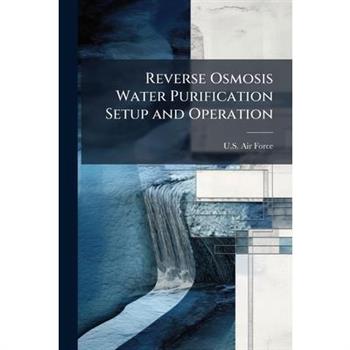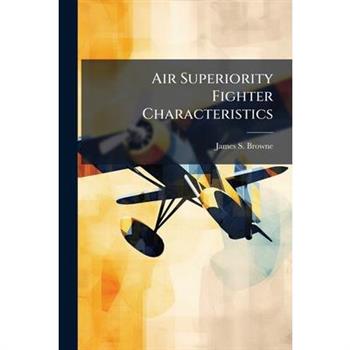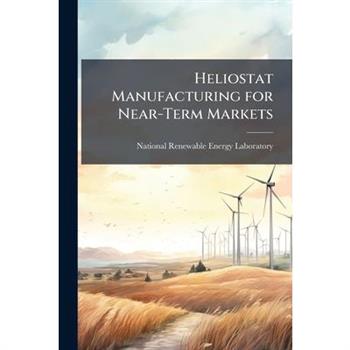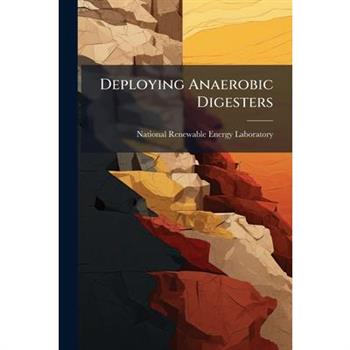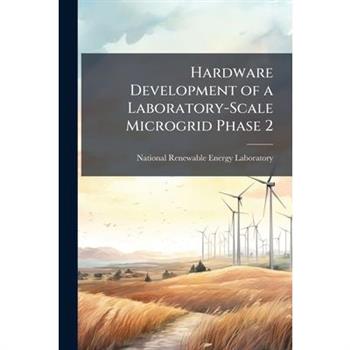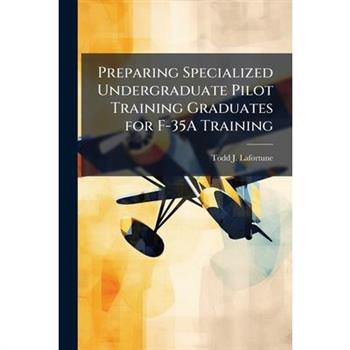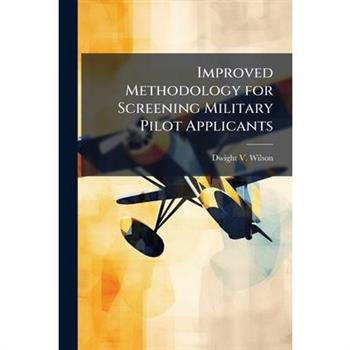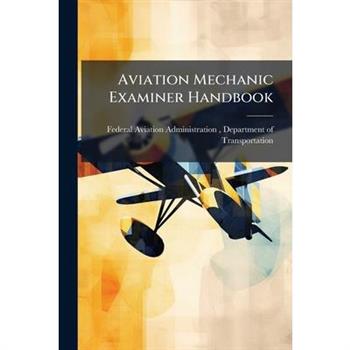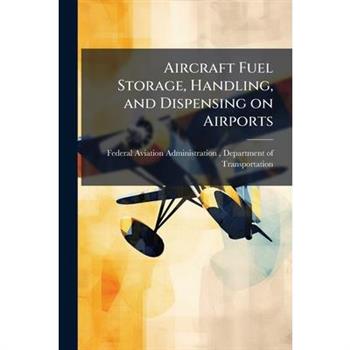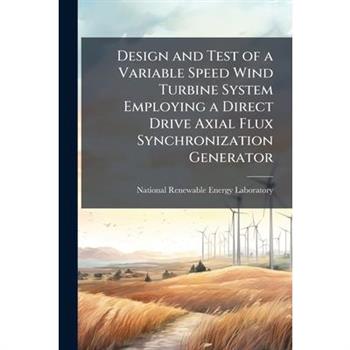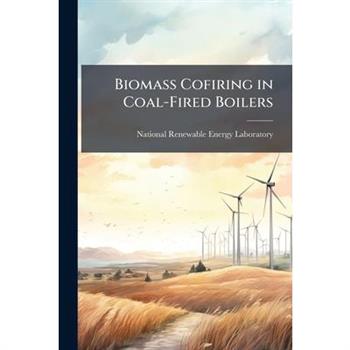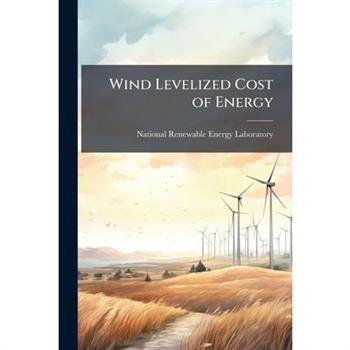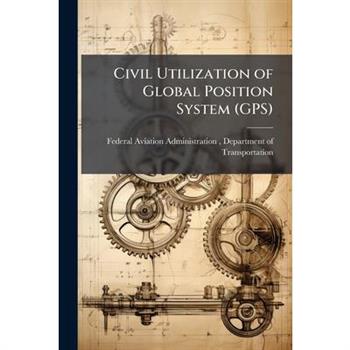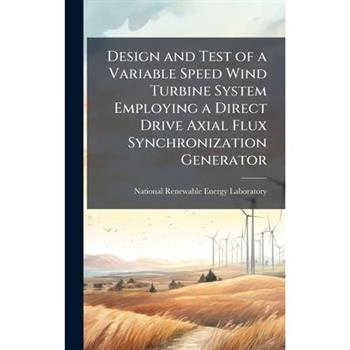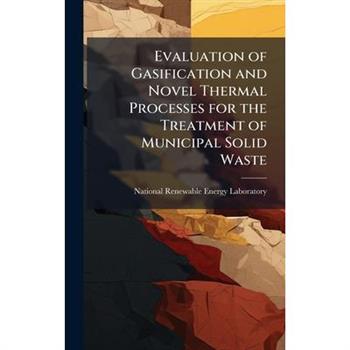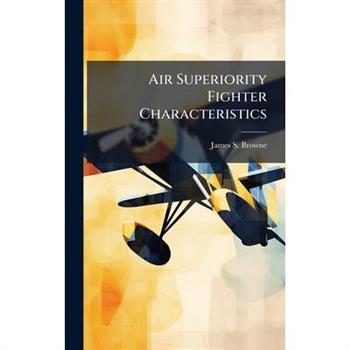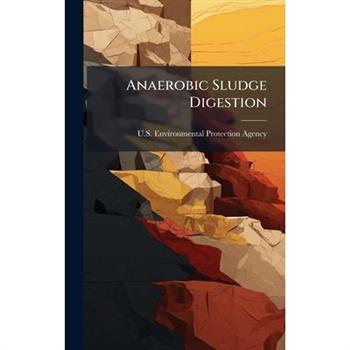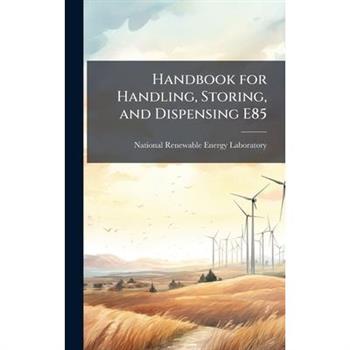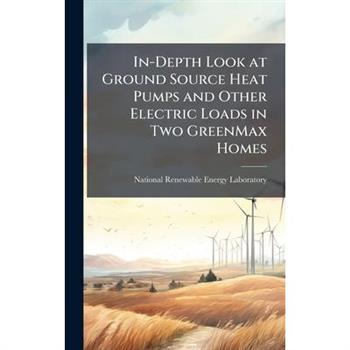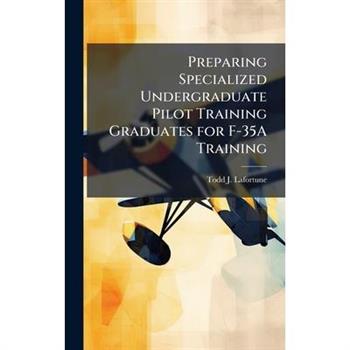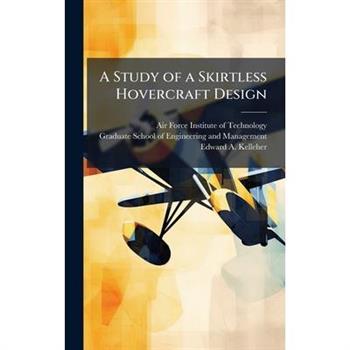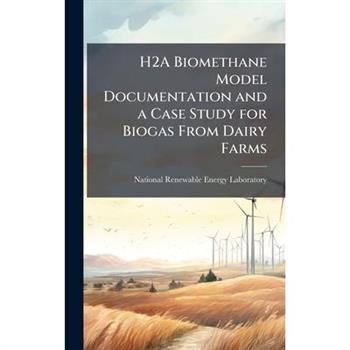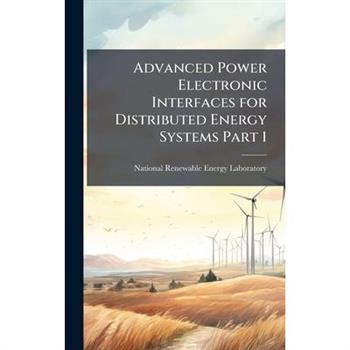Reverse Osmosis Water Purification Setup and Operation
The United States Air Force (USAF) is the aerial warfare service branch of the United States Armed Forces. The USAF was initially a part of the U.S. Army, but was formed as a separate branch of the military in 1947 under the National Security Act. Although it is the most recent branch of the U.S. Military to be formed, the USAF is the most technologically advanced air force in the world. The Air Force e-Publishing Library's mission is to provide documents for Air Force customers worldwide, and supply life-cycle management of Air Force Electronic Publishing to enable product and service delivery to the end user, regardless of media in pace and in war. The United States Air Force e-Publishing Library collection contains manuals and reports describing the procedures and protocol necessary in various situations and circumstances. Some titles in the collection include: A Manual of Civil Engineer Bare Base Development, Guide to Mobile Aircraft Arresting System Installation, and Nuclear Weapons Accident and Incident Response. This publication is part of this Air Force e-Publications collection.This work has been selected by scholars as being culturally important, and is part of the knowledge base of civilization as we know it. This work was reproduced from the original artifact, and remains as true to the original work as possible. Therefore, you will see the original copyright references, library stamps (as most of these works have been housed in our most important libraries around the world), and other notations in the work.This work is in the public domain in the United States of America, and possibly other nations. Within the United States, you may freely copy and distribute this work, as no entity (individual or corporate) has a copyright on the body of the work.As a reproduction of a historical artifact, this work may contain missing or blurred pages, poor pictures, errant marks, etc. Scholars believe, and we concur, that this work is important enough to be preserved, reproduced, and made generally available to the public. We appreciate your support of the preservation process, and thank you for being an important part of keeping this knowledge alive and relevant.
Tactical Aircraft Maintenance Specialty
The United States Air Force (USAF) is the aerial warfare service branch of the United States Armed Forces. The USAF was initially a part of the U.S. Army, but was formed as a separate branch of the military in 1947 under the National Security Act. Although it is the most recent branch of the U.S. Military to be formed, the USAF is the most technologically advanced air force in the world. The Air Force e-Publishing Library's mission is to provide documents for Air Force customers worldwide, and supply life-cycle management of Air Force Electronic Publishing to enable product and service delivery to the end user, regardless of media in pace and in war. The United States Air Force e-Publishing Library collection contains manuals and reports describing the procedures and protocol necessary in various situations and circumstances. Some titles in the collection include: A Manual of Civil Engineer Bare Base Development, Guide to Mobile Aircraft Arresting System Installation, and Nuclear Weapons Accident and Incident Response. This publication is part of this Air Force e-Publications collection.This work has been selected by scholars as being culturally important, and is part of the knowledge base of civilization as we know it. This work was reproduced from the original artifact, and remains as true to the original work as possible. Therefore, you will see the original copyright references, library stamps (as most of these works have been housed in our most important libraries around the world), and other notations in the work.This work is in the public domain in the United States of America, and possibly other nations. Within the United States, you may freely copy and distribute this work, as no entity (individual or corporate) has a copyright on the body of the work.As a reproduction of a historical artifact, this work may contain missing or blurred pages, poor pictures, errant marks, etc. Scholars believe, and we concur, that this work is important enough to be preserved, reproduced, and made generally available to the public. We appreciate your support of the preservation process, and thank you for being an important part of keeping this knowledge alive and relevant.
Air Superiority Fighter Characteristics
This study determines the essential characteristics of an air superiority fighter. Its importance stems from the assumption that air superiority is paramount in any military operation and that fighter aircraft play a major role. Air superiority as well as roles, functions, and missions are defined in chapter one to develop an understanding of the operative terms and definitions used throughout the thesis. This thesis is an in-depth study of the historical characteristics of the air superiority fighter. A complete review of air superiority fighter evolution is divided into four distinct generations. The review includes example aircraft that highlight the consistent characteristics found in each generation. The thesis research and analysis chapters focus on three key areas of interest. They are: (1) aircraft design, (2) avionics and weapons, and (3) training. The key areas of interest are coupled with a discussion of cost considerations during analysis. Fiscal constraints are a major factor in design and employment limitations. The thesis concludes that there are three essential characteristics of an air superiority fighter: (1) the aircraft is designed for the air-to-air role, (2) the aircraft has the first launch opportunity, and (3) the aircraft is flown by singularly trained air-to-air pilots.This work has been selected by scholars as being culturally important, and is part of the knowledge base of civilization as we know it. This work was reproduced from the original artifact, and remains as true to the original work as possible. Therefore, you will see the original copyright references, library stamps (as most of these works have been housed in our most important libraries around the world), and other notations in the work.This work is in the public domain in the United States of America, and possibly other nations. Within the United States, you may freely copy and distribute this work, as no entity (individual or corporate) has a copyright on the body of the work.As a reproduction of a historical artifact, this work may contain missing or blurred pages, poor pictures, errant marks, etc. Scholars believe, and we concur, that this work is important enough to be preserved, reproduced, and made generally available to the public. We appreciate your support of the preservation process, and thank you for being an important part of keeping this knowledge alive and relevant.
Heliostat Manufacturing for Near-Term Markets
This report describes a project by Science Applications International Corporation and its subcontractors Boeing/Rocketdyne and Bechtel Corp. to develop manufacturing technology for production of SAIC stretched membrane heliostats. The project consists of three phases, of which two are complete. This first phase had as its goal to identify and complete a detailed evaluation of manufacturing technology, process changes, and design enhancements to be pursued for near-term heliostat markets. In the second phase, the design of the SAIC stretched membrane heliostat was refined, manufacturing tooling for mirror facet and structural component fabrication was implemented, and four proof-of-concept/test heliostats were produced and installed in three locations. The proposed plan for Phase III calls for improvements in production tooling to enhance product quality and prepare increased production capacity. This project is part of the U.S. Department of Energy's Solar Manufacturing Technology Program (SolMaT).This work has been selected by scholars as being culturally important, and is part of the knowledge base of civilization as we know it. This work was reproduced from the original artifact, and remains as true to the original work as possible. Therefore, you will see the original copyright references, library stamps (as most of these works have been housed in our most important libraries around the world), and other notations in the work.This work is in the public domain in the United States of America, and possibly other nations. Within the United States, you may freely copy and distribute this work, as no entity (individual or corporate) has a copyright on the body of the work.As a reproduction of a historical artifact, this work may contain missing or blurred pages, poor pictures, errant marks, etc. Scholars believe, and we concur, that this work is important enough to be preserved, reproduced, and made generally available to the public. We appreciate your support of the preservation process, and thank you for being an important part of keeping this knowledge alive and relevant.
Integrating Department of Defense Unmanned Aerial Systems Into the National Airspace Structure
The Department of Defense (DoD) is constantly adding to the inventory of unmanned aerial systems (UAS) across all Services. Compounded by increasing mission sets for unmanned aviation, both home and abroad, DoD requires the ability to operate UAS within and throughout the US national airspace structure (NAS). The Federal Aviation Administration (FAA) has the responsibility of managing, updating, and amending federal regulations for the safe operation of aerospace vehicles within the NAS. Based on safety concerns, the FAA currently limits UAS operations within the NAS through a certification of authorization process that takes up to 60 days for approval and limits flight profiles to specific parameters. While the DoD is not satisfied with this process, as it limits UAS operations within the US, the FAA will not amend current regulations until certain operating and design parameters are met. Based upon these two views, this thesis determines if the DoD and FAA are working together in an efficient manner to develop a safe way to integrate UAS into the NAS and provides recommendations for future integration. By granting the FAA the power to incorporate all facets of UAS processes, it can define terms and develop regulations for UAS integration. The FAA must also develop a UAS categorization system and start incorporating smaller UAS that lack full integration capability in order to concentrate on the larger issue of full NAS access. These recommendations provide a point of departure for the DoD and FAA to start integrating UAS into the NAS that will benefit operations in both the civil and public sector.This work has been selected by scholars as being culturally important, and is part of the knowledge base of civilization as we know it. This work was reproduced from the original artifact, and remains as true to the original work as possible. Therefore, you will see the original copyright references, library stamps (as most of these works have been housed in our most important libraries around the world), and other notations in the work.This work is in the public domain in the United States of America, and possibly other nations. Within the United States, you may freely copy and distribute this work, as no entity (individual or corporate) has a copyright on the body of the work.As a reproduction of a historical artifact, this work may contain missing or blurred pages, poor pictures, errant marks, etc. Scholars believe, and we concur, that this work is important enough to be preserved, reproduced, and made generally available to the public. We appreciate your support of the preservation process, and thank you for being an important part of keeping this knowledge alive and relevant.
Handbook for Handling, Storing, and Dispensing E85
Guidebook contains information about EPAct alternative fuels regulations for fleets, flexible fuel vehicles, E85 properties and specifications, and E85 handling and storage guidelines.This work has been selected by scholars as being culturally important, and is part of the knowledge base of civilization as we know it. This work was reproduced from the original artifact, and remains as true to the original work as possible. Therefore, you will see the original copyright references, library stamps (as most of these works have been housed in our most important libraries around the world), and other notations in the work.This work is in the public domain in the United States of America, and possibly other nations. Within the United States, you may freely copy and distribute this work, as no entity (individual or corporate) has a copyright on the body of the work.As a reproduction of a historical artifact, this work may contain missing or blurred pages, poor pictures, errant marks, etc. Scholars believe, and we concur, that this work is important enough to be preserved, reproduced, and made generally available to the public. We appreciate your support of the preservation process, and thank you for being an important part of keeping this knowledge alive and relevant.
Weather for Aircrews
The United States Air Force (USAF) is the aerial warfare service branch of the United States Armed Forces. The USAF was initially a part of the U.S. Army, but was formed as a separate branch of the military in 1947 under the National Security Act. Although it is the most recent branch of the U.S. Military to be formed, the USAF is the most technologically advanced air force in the world. The Air Force e-Publishing Library's mission is to provide documents for Air Force customers worldwide, and supply life-cycle management of Air Force Electronic Publishing to enable product and service delivery to the end user, regardless of media in pace and in war. The United States Air Force e-Publishing Library collection contains manuals and reports describing the procedures and protocol necessary in various situations and circumstances. Some titles in the collection include: A Manual of Civil Engineer Bare Base Development, Guide to Mobile Aircraft Arresting System Installation, and Nuclear Weapons Accident and Incident Response. This publication is part of this Air Force e-Publications collection.This work has been selected by scholars as being culturally important, and is part of the knowledge base of civilization as we know it. This work was reproduced from the original artifact, and remains as true to the original work as possible. Therefore, you will see the original copyright references, library stamps (as most of these works have been housed in our most important libraries around the world), and other notations in the work.This work is in the public domain in the United States of America, and possibly other nations. Within the United States, you may freely copy and distribute this work, as no entity (individual or corporate) has a copyright on the body of the work.As a reproduction of a historical artifact, this work may contain missing or blurred pages, poor pictures, errant marks, etc. Scholars believe, and we concur, that this work is important enough to be preserved, reproduced, and made generally available to the public. We appreciate your support of the preservation process, and thank you for being an important part of keeping this knowledge alive and relevant.
Electrodeposition of CuIn1-xGaxSe2 Materials for Solar Cells
This report describes our scientific understanding of the CIGS materials system, solar cells, and processes. Through DOE support, the investigators developed much of the technology and device fabrication infrastructure applied to electrodeposited (ED) materials. The electrodeposition process is simple and fast, and can synthesize multinary precursors for subsequent processing into CuInxGa1-xSe2 (CIGS) thin-film absorbers for solar cells. The device fabricated by using electrodeposited CIGS precursor layers resulted in total-area conversion efficiencies up to 15.4%. As-deposited precursors are Cu-rich CIGS. Additional In, Ga, and Se (up to 50%) are added to the precursor films by physical vapor deposition (PVD) to adjust the final semiconductor film composition to about Cu0.95In0.75Ga0.25Se2. The ED device parameters are compared with those of an 18.8% PVD device.This work has been selected by scholars as being culturally important, and is part of the knowledge base of civilization as we know it. This work was reproduced from the original artifact, and remains as true to the original work as possible. Therefore, you will see the original copyright references, library stamps (as most of these works have been housed in our most important libraries around the world), and other notations in the work.This work is in the public domain in the United States of America, and possibly other nations. Within the United States, you may freely copy and distribute this work, as no entity (individual or corporate) has a copyright on the body of the work.As a reproduction of a historical artifact, this work may contain missing or blurred pages, poor pictures, errant marks, etc. Scholars believe, and we concur, that this work is important enough to be preserved, reproduced, and made generally available to the public. We appreciate your support of the preservation process, and thank you for being an important part of keeping this knowledge alive and relevant.
Deploying Anaerobic Digesters
Anaerobic digestion is a biological process, where synergistic actions between bacteria are occurring at four different levels. First, hydrolysis converts a wide range of solid organic materials into sugars and amino acids. Fermenting these materials produces volatile fatty acids (VFAs). Acidogenesis forms hydrogen, carbon dioxide (CO2), and acetate from VFAs. Finally, methanogenesis produces biogas, a mixture of methane, CO2, and numerous trace elements. The key biological issues are determining the most favorable conditions for each process stage and how nonoptimal circumstances affect the process as a whole, and the governing role of hydrogen generation and consumption.This work has been selected by scholars as being culturally important, and is part of the knowledge base of civilization as we know it. This work was reproduced from the original artifact, and remains as true to the original work as possible. Therefore, you will see the original copyright references, library stamps (as most of these works have been housed in our most important libraries around the world), and other notations in the work.This work is in the public domain in the United States of America, and possibly other nations. Within the United States, you may freely copy and distribute this work, as no entity (individual or corporate) has a copyright on the body of the work.As a reproduction of a historical artifact, this work may contain missing or blurred pages, poor pictures, errant marks, etc. Scholars believe, and we concur, that this work is important enough to be preserved, reproduced, and made generally available to the public. We appreciate your support of the preservation process, and thank you for being an important part of keeping this knowledge alive and relevant.
Hardware Development of a Laboratory-Scale Microgrid Phase 2
This report summarizes the activities of the second year of a three-year project to develop control software for microsource distributed generation systems. In this phase, a laboratory-scale microgrid was expanded to include: 1) Two emulated distributed resources; 2) Static switchgear to allow rapid disconnection and reconnection; 3) Electronic synchronizing circuitry to enable transient-free grid interconnection; 4) Control software for dynamically varying the frequency and voltage controller structures; and 5) Power measurement instrumentation for capturing transient waveforms at the interconnect during switching events.This work has been selected by scholars as being culturally important, and is part of the knowledge base of civilization as we know it. This work was reproduced from the original artifact, and remains as true to the original work as possible. Therefore, you will see the original copyright references, library stamps (as most of these works have been housed in our most important libraries around the world), and other notations in the work.This work is in the public domain in the United States of America, and possibly other nations. Within the United States, you may freely copy and distribute this work, as no entity (individual or corporate) has a copyright on the body of the work.As a reproduction of a historical artifact, this work may contain missing or blurred pages, poor pictures, errant marks, etc. Scholars believe, and we concur, that this work is important enough to be preserved, reproduced, and made generally available to the public. We appreciate your support of the preservation process, and thank you for being an important part of keeping this knowledge alive and relevant.
F-4 Phantom Aircrew Survival Equipment Evaluation
The F-4 Phantom aircraft is equipped with an ejection seat which has space provided in a seat kit for the carriage of aircrew survival equipment. This study evaluates the utilization of this space and the equipment available for inclusion in the kit. The space is not being filled with appropriate equipment in many instances because the required density of the packed kit is too great, requiring local units to pack lead shot instead of survival equipment. The survival equipment available to the aircrew in the seat kit is generally of good quality and sound theoretical design. However, there are many areas in which the equipment has not been redesigned to use current technology and thus provide more and better equipment in a smaller space. Additionally, the average survival kit lacks the cold weather survival protective equipment required to sustain the downed aircrew member. This study contains specific recommendations for equipment redesign and selection for the F-4 survival seat pack.This work has been selected by scholars as being culturally important, and is part of the knowledge base of civilization as we know it. This work was reproduced from the original artifact, and remains as true to the original work as possible. Therefore, you will see the original copyright references, library stamps (as most of these works have been housed in our most important libraries around the world), and other notations in the work.This work is in the public domain in the United States of America, and possibly other nations. Within the United States, you may freely copy and distribute this work, as no entity (individual or corporate) has a copyright on the body of the work.As a reproduction of a historical artifact, this work may contain missing or blurred pages, poor pictures, errant marks, etc. Scholars believe, and we concur, that this work is important enough to be preserved, reproduced, and made generally available to the public. We appreciate your support of the preservation process, and thank you for being an important part of keeping this knowledge alive and relevant.
Evaluation of Gasification and Novel Thermal Processes for the Treatment of Municipal Solid Waste
This report identifies seven developers whose gasification technologies can be used to treat the organic constituents of municipal solid waste: Energy Products of Idaho; TPS Permiska Processer AB; Proler International Corporation; Thermoselect, Inc.; Batelle; Pedco Incorporated; and ThermoChem, Incorporated. Their processes recover heat directly, produce a fuel product, or produce a feedstock for chemical processes. The technologies are on the brink of commercial availability. This report evaluates, for each technology, several kinds of issues. Technical considerations were material balance, energy balance, plant thermal efficiency, and effect of feedstock contaminants. Environmental considerations were the regulatory context, and such things as composition, mass rate, and treatability of pollutants. Business issues were related to liklihood of commercialization. Finally, cost and economic issues such as capital and operating costs, and the refuse-derived fuel preparation and energy conversion costs, were considered. The final section of the report reviews and summarizes the information gathered during the study.This work has been selected by scholars as being culturally important, and is part of the knowledge base of civilization as we know it. This work was reproduced from the original artifact, and remains as true to the original work as possible. Therefore, you will see the original copyright references, library stamps (as most of these works have been housed in our most important libraries around the world), and other notations in the work.This work is in the public domain in the United States of America, and possibly other nations. Within the United States, you may freely copy and distribute this work, as no entity (individual or corporate) has a copyright on the body of the work.As a reproduction of a historical artifact, this work may contain missing or blurred pages, poor pictures, errant marks, etc. Scholars believe, and we concur, that this work is important enough to be preserved, reproduced, and made generally available to the public. We appreciate your support of the preservation process, and thank you for being an important part of keeping this knowledge alive and relevant.
Preparing Specialized Undergraduate Pilot Training Graduates for F-35A Training
In 2015, the USAF plans to start its first class of F-35A Initial Qualification Training (IQT) students immediately following their graduation from Specialized Undergraduate Pilot Training (SUPT). This class will signify the beginning of F-35A pilot production with a steady increase to over 180 F-35A pilots per year. These pilots will require certain skills to fly the F-35A and will be somewhat different from the skills required of today's fighter pilots as we move from fourth generation F-16, F-15, and A-10 aircraft to the fifth generation F-22A and F-35A. Without a major change in either how future fighter pilots train or the aircraft they train in the USAF will not be maximizing its combat effectiveness. Therefore, the current USAF fighter pilot training system from Initial Flight Screening through SUPT, Introduction to Fighter Fundamentals (IFF), and finishing with F-35A Formal Training Unit (FTU) might need to adapt in order to prepare these students for future combat operations. This study examines what skills might be required for future students entering F-35A FTU, determine whether the current system adequately trains them and if not make recommendations on how to mitigate the shortfall.This work has been selected by scholars as being culturally important, and is part of the knowledge base of civilization as we know it. This work was reproduced from the original artifact, and remains as true to the original work as possible. Therefore, you will see the original copyright references, library stamps (as most of these works have been housed in our most important libraries around the world), and other notations in the work.This work is in the public domain in the United States of America, and possibly other nations. Within the United States, you may freely copy and distribute this work, as no entity (individual or corporate) has a copyright on the body of the work.As a reproduction of a historical artifact, this work may contain missing or blurred pages, poor pictures, errant marks, etc. Scholars believe, and we concur, that this work is important enough to be preserved, reproduced, and made generally available to the public. We appreciate your support of the preservation process, and thank you for being an important part of keeping this knowledge alive and relevant.
Improved Methodology for Screening Military Pilot Applicants
This thesis concentrates on the process of selecting men for military pilot training. Past, present and possible future selection techniques are explored and analyzed. The objective is to determine how the present selection method can be improved so that the number of eliminations from pilot training, and, consequently, the cost of military pilot training may be reduced. The paper is divided into three general areas: History and Analysis of Selection Methods: The methods which have been used to select men for military pilot training from 1908 to 1966 are reviewed and analyzed. Written and apparatus aptitude tests which were developed during World War II receive detailed analysis. Investigation of Other Applicable Procedures: Several procedures are explored which might improve the selection system if implemented. These include light plane training; the Flight Instruction Program; personal interviews; psychological, psychiatric, stress and motivation testing. Conclusions: Four conclusions are evolved from investigation and analysis; a.The written aptitude test should be retained. b. Flight Instruction Program screening should be expanded to include applicants for pilot training from the U. S. Air Force Officer Training School and U.S. Navy Aviation Officer Candidate sources. c. A modern apparatus test should be developed and included in selection testing to evaluate pilot potential. d. A valid motivation test should be developed and implemented for inclusion in the battery of selection tests.This work has been selected by scholars as being culturally important, and is part of the knowledge base of civilization as we know it. This work was reproduced from the original artifact, and remains as true to the original work as possible. Therefore, you will see the original copyright references, library stamps (as most of these works have been housed in our most important libraries around the world), and other notations in the work.This work is in the public domain in the United States of America, and possibly other nations. Within the United States, you may freely copy and distribute this work, as no entity (individual or corporate) has a copyright on the body of the work.As a reproduction of a historical artifact, this work may contain missing or blurred pages, poor pictures, errant marks, etc. Scholars believe, and we concur, that this work is important enough to be preserved, reproduced, and made generally available to the public. We appreciate your support of the preservation process, and thank you for being an important part of keeping this knowledge alive and relevant.
Aviation Mechanic Examiner Handbook
The Department of Transportation (USDOT or DOT) is a federal cabinet department of the United States government. The office's main concerns are those associated with transportation and transportation needs across the country. Established in 1967, the DOT is administered by the United States Secretary of Transportation. Some of the DOT's larger agencies include the Federal Aviation Administration (FAA), the Federal Transit Administration (FTA), the Maritime Administration (MARAD), and the Federal Highway Administration (FHWA). The Department of Transportation and its agencies create numerous publications each year to educate the public about certain areas of transportation, new technology in the field, and the histories of the agencies and the department.This work has been selected by scholars as being culturally important, and is part of the knowledge base of civilization as we know it. This work was reproduced from the original artifact, and remains as true to the original work as possible. Therefore, you will see the original copyright references, library stamps (as most of these works have been housed in our most important libraries around the world), and other notations in the work.This work is in the public domain in the United States of America, and possibly other nations. Within the United States, you may freely copy and distribute this work, as no entity (individual or corporate) has a copyright on the body of the work.As a reproduction of a historical artifact, this work may contain missing or blurred pages, poor pictures, errant marks, etc. Scholars believe, and we concur, that this work is important enough to be preserved, reproduced, and made generally available to the public. We appreciate your support of the preservation process, and thank you for being an important part of keeping this knowledge alive and relevant.
Bird/Wildlife Aircraft Strike Hazard (BASH) Management Techniques
The United States Air Force (USAF) is the aerial warfare service branch of the United States Armed Forces. The USAF was initially a part of the U.S. Army, but was formed as a separate branch of the military in 1947 under the National Security Act. Although it is the most recent branch of the U.S. Military to be formed, the USAF is the most technologically advanced air force in the world. The Air Force e-Publishing Library's mission is to provide documents for Air Force customers worldwide, and supply life-cycle management of Air Force Electronic Publishing to enable product and service delivery to the end user, regardless of media in pace and in war. The United States Air Force e-Publishing Library collection contains manuals and reports describing the procedures and protocol necessary in various situations and circumstances. Some titles in the collection include: A Manual of Civil Engineer Bare Base Development, Guide to Mobile Aircraft Arresting System Installation, and Nuclear Weapons Accident and Incident Response. This publication is part of this Air Force e-Publications collection.This work has been selected by scholars as being culturally important, and is part of the knowledge base of civilization as we know it. This work was reproduced from the original artifact, and remains as true to the original work as possible. Therefore, you will see the original copyright references, library stamps (as most of these works have been housed in our most important libraries around the world), and other notations in the work.This work is in the public domain in the United States of America, and possibly other nations. Within the United States, you may freely copy and distribute this work, as no entity (individual or corporate) has a copyright on the body of the work.As a reproduction of a historical artifact, this work may contain missing or blurred pages, poor pictures, errant marks, etc. Scholars believe, and we concur, that this work is important enough to be preserved, reproduced, and made generally available to the public. We appreciate your support of the preservation process, and thank you for being an important part of keeping this knowledge alive and relevant.
Aircraft Loadmaster
The United States Air Force (USAF) is the aerial warfare service branch of the United States Armed Forces. The USAF was initially a part of the U.S. Army, but was formed as a separate branch of the military in 1947 under the National Security Act. Although it is the most recent branch of the U.S. Military to be formed, the USAF is the most technologically advanced air force in the world. The Air Force e-Publishing Library's mission is to provide documents for Air Force customers worldwide, and supply life-cycle management of Air Force Electronic Publishing to enable product and service delivery to the end user, regardless of media in pace and in war. The United States Air Force e-Publishing Library collection contains manuals and reports describing the procedures and protocol necessary in various situations and circumstances. Some titles in the collection include: A Manual of Civil Engineer Bare Base Development, Guide to Mobile Aircraft Arresting System Installation, and Nuclear Weapons Accident and Incident Response. This publication is part of this Air Force e-Publications collection.This work has been selected by scholars as being culturally important, and is part of the knowledge base of civilization as we know it. This work was reproduced from the original artifact, and remains as true to the original work as possible. Therefore, you will see the original copyright references, library stamps (as most of these works have been housed in our most important libraries around the world), and other notations in the work.This work is in the public domain in the United States of America, and possibly other nations. Within the United States, you may freely copy and distribute this work, as no entity (individual or corporate) has a copyright on the body of the work.As a reproduction of a historical artifact, this work may contain missing or blurred pages, poor pictures, errant marks, etc. Scholars believe, and we concur, that this work is important enough to be preserved, reproduced, and made generally available to the public. We appreciate your support of the preservation process, and thank you for being an important part of keeping this knowledge alive and relevant.
Flight Attendant
The United States Air Force (USAF) is the aerial warfare service branch of the United States Armed Forces. The USAF was initially a part of the U.S. Army, but was formed as a separate branch of the military in 1947 under the National Security Act. Although it is the most recent branch of the U.S. Military to be formed, the USAF is the most technologically advanced air force in the world. The Air Force e-Publishing Library's mission is to provide documents for Air Force customers worldwide, and supply life-cycle management of Air Force Electronic Publishing to enable product and service delivery to the end user, regardless of media in pace and in war. The United States Air Force e-Publishing Library collection contains manuals and reports describing the procedures and protocol necessary in various situations and circumstances. Some titles in the collection include: A Manual of Civil Engineer Bare Base Development, Guide to Mobile Aircraft Arresting System Installation, and Nuclear Weapons Accident and Incident Response. This publication is part of this Air Force e-Publications collection.This work has been selected by scholars as being culturally important, and is part of the knowledge base of civilization as we know it. This work was reproduced from the original artifact, and remains as true to the original work as possible. Therefore, you will see the original copyright references, library stamps (as most of these works have been housed in our most important libraries around the world), and other notations in the work.This work is in the public domain in the United States of America, and possibly other nations. Within the United States, you may freely copy and distribute this work, as no entity (individual or corporate) has a copyright on the body of the work.As a reproduction of a historical artifact, this work may contain missing or blurred pages, poor pictures, errant marks, etc. Scholars believe, and we concur, that this work is important enough to be preserved, reproduced, and made generally available to the public. We appreciate your support of the preservation process, and thank you for being an important part of keeping this knowledge alive and relevant.
FAA Acceptable Methods, Techniques, and Practices
The Department of Transportation (USDOT or DOT) is a federal cabinet department of the United States government. The office's main concerns are those associated with transportation and transportation needs across the country. Established in 1967, the DOT is administered by the United States Secretary of Transportation. Some of the DOT's larger agencies include the Federal Aviation Administration (FAA), the Federal Transit Administration (FTA), the Maritime Administration (MARAD), and the Federal Highway Administration (FHWA). The Department of Transportation and its agencies create numerous publications each year to educate the public about certain areas of transportation, new technology in the field, and the histories of the agencies and the department.This work has been selected by scholars as being culturally important, and is part of the knowledge base of civilization as we know it. This work was reproduced from the original artifact, and remains as true to the original work as possible. Therefore, you will see the original copyright references, library stamps (as most of these works have been housed in our most important libraries around the world), and other notations in the work.This work is in the public domain in the United States of America, and possibly other nations. Within the United States, you may freely copy and distribute this work, as no entity (individual or corporate) has a copyright on the body of the work.As a reproduction of a historical artifact, this work may contain missing or blurred pages, poor pictures, errant marks, etc. Scholars believe, and we concur, that this work is important enough to be preserved, reproduced, and made generally available to the public. We appreciate your support of the preservation process, and thank you for being an important part of keeping this knowledge alive and relevant.
Aircraft Fuel Storage, Handling, and Dispensing on Airports
The Department of Transportation (USDOT or DOT) is a federal cabinet department of the United States government. The office's main concerns are those associated with transportation and transportation needs across the country. Established in 1967, the DOT is administered by the United States Secretary of Transportation. Some of the DOT's larger agencies include the Federal Aviation Administration (FAA), the Federal Transit Administration (FTA), the Maritime Administration (MARAD), and the Federal Highway Administration (FHWA). The Department of Transportation and its agencies create numerous publications each year to educate the public about certain areas of transportation, new technology in the field, and the histories of the agencies and the department.This work has been selected by scholars as being culturally important, and is part of the knowledge base of civilization as we know it. This work was reproduced from the original artifact, and remains as true to the original work as possible. Therefore, you will see the original copyright references, library stamps (as most of these works have been housed in our most important libraries around the world), and other notations in the work.This work is in the public domain in the United States of America, and possibly other nations. Within the United States, you may freely copy and distribute this work, as no entity (individual or corporate) has a copyright on the body of the work.As a reproduction of a historical artifact, this work may contain missing or blurred pages, poor pictures, errant marks, etc. Scholars believe, and we concur, that this work is important enough to be preserved, reproduced, and made generally available to the public. We appreciate your support of the preservation process, and thank you for being an important part of keeping this knowledge alive and relevant.
Design and Test of a Variable Speed Wind Turbine System Employing a Direct Drive Axial Flux Synchronization Generator
The goal of this funded research project is the definition, analytical investigation, modeling, and prototype realization of a current-source conversion topology tailored to high-power wind turbines.This work has been selected by scholars as being culturally important, and is part of the knowledge base of civilization as we know it. This work was reproduced from the original artifact, and remains as true to the original work as possible. Therefore, you will see the original copyright references, library stamps (as most of these works have been housed in our most important libraries around the world), and other notations in the work.This work is in the public domain in the United States of America, and possibly other nations. Within the United States, you may freely copy and distribute this work, as no entity (individual or corporate) has a copyright on the body of the work.As a reproduction of a historical artifact, this work may contain missing or blurred pages, poor pictures, errant marks, etc. Scholars believe, and we concur, that this work is important enough to be preserved, reproduced, and made generally available to the public. We appreciate your support of the preservation process, and thank you for being an important part of keeping this knowledge alive and relevant.
In-Flight Refueling (Boom Operator)
The United States Air Force (USAF) is the aerial warfare service branch of the United States Armed Forces. The USAF was initially a part of the U.S. Army, but was formed as a separate branch of the military in 1947 under the National Security Act. Although it is the most recent branch of the U.S. Military to be formed, the USAF is the most technologically advanced air force in the world. The Air Force e-Publishing Library's mission is to provide documents for Air Force customers worldwide, and supply life-cycle management of Air Force Electronic Publishing to enable product and service delivery to the end user, regardless of media in pace and in war. The United States Air Force e-Publishing Library collection contains manuals and reports describing the procedures and protocol necessary in various situations and circumstances. Some titles in the collection include: A Manual of Civil Engineer Bare Base Development, Guide to Mobile Aircraft Arresting System Installation, and Nuclear Weapons Accident and Incident Response. This publication is part of this Air Force e-Publications collection.This work has been selected by scholars as being culturally important, and is part of the knowledge base of civilization as we know it. This work was reproduced from the original artifact, and remains as true to the original work as possible. Therefore, you will see the original copyright references, library stamps (as most of these works have been housed in our most important libraries around the world), and other notations in the work.This work is in the public domain in the United States of America, and possibly other nations. Within the United States, you may freely copy and distribute this work, as no entity (individual or corporate) has a copyright on the body of the work.As a reproduction of a historical artifact, this work may contain missing or blurred pages, poor pictures, errant marks, etc. Scholars believe, and we concur, that this work is important enough to be preserved, reproduced, and made generally available to the public. We appreciate your support of the preservation process, and thank you for being an important part of keeping this knowledge alive and relevant.
Hydrogen Storage in Wind Turbine Towers
Low-cost hydrogen storage is recognized as a cornerstone of a renewables-hydrogen economy. Modern utility-scale wind turbine towers are typically conical steel structures that, in addition to supporting the rotor, could be used to store hydrogen. This study has three objectives: 1) Identify the paramount considerations associated with using a wind turbine tower for hydrogen storage; 2) Propose and analyze a cost-effective design for a hydrogen-storing tower; and 3) Compare the cost of storage in hydrogen towers to the cost of storage in conventional pressure vessels. The paramount considerations associated with a hydrogen tower are corrosion (in the form of hydrogen embrittlement) and structural failure (through bursting or fatigue life degradation). Although hydrogen embrittlement (HE) requires more research, it does not appear to prohibit the use of turbine towers for hydrogen storage. Furthermore, the structural modifications required to store hydrogen in a tower are not cost prohibitive.; We discovered that hydrogen towers have a "crossover pressure" at which their critical mode of failure crosses over from fatigue to bursting. Above the crossover pressure, however, storage costs rise quickly. The most cost-effective hydrogen tower design would use substantially all of its volume for hydrogen storage and be designed at its crossover pressure.This work has been selected by scholars as being culturally important, and is part of the knowledge base of civilization as we know it. This work was reproduced from the original artifact, and remains as true to the original work as possible. Therefore, you will see the original copyright references, library stamps (as most of these works have been housed in our most important libraries around the world), and other notations in the work.This work is in the public domain in the United States of America, and possibly other nations. Within the United States, you may freely copy and distribute this work, as no entity (individual or corporate) has a copyright on the body of the work.As a reproduction of a historical artifact, this work may contain missing or blurred pages, poor pictures, errant marks, etc. Scholars believe, and we concur, that this work is important enough to be preserved, reproduced, and made generally available to the public. We appreciate your support of the preservation process, and thank you for being an important part of keeping this knowledge alive and relevant.
Biomass Cofiring in Coal-Fired Boilers
Cofiring biomass-for example, forestry residues such as wood chips-with coal in existing boilers is one of the easiest biomass technologies to implement in a federal facility. The current practice is to substitute biomass for up to 20% of the coal in the boiler. Cofiring has many benefits: it helps to reduce fuel costs as well as the use of landfills, and it curbs emissions of sulfur oxide, nitrogen oxide, and the greenhouse gases associated with burning fossil fuels. This Federal Technology Alert was prepared by the Department of Energy's Federal Energy Management Program to give federal facility managers the information they need to decide whether they should pursue biomass cofiring at their facilities.This work has been selected by scholars as being culturally important, and is part of the knowledge base of civilization as we know it. This work was reproduced from the original artifact, and remains as true to the original work as possible. Therefore, you will see the original copyright references, library stamps (as most of these works have been housed in our most important libraries around the world), and other notations in the work.This work is in the public domain in the United States of America, and possibly other nations. Within the United States, you may freely copy and distribute this work, as no entity (individual or corporate) has a copyright on the body of the work.As a reproduction of a historical artifact, this work may contain missing or blurred pages, poor pictures, errant marks, etc. Scholars believe, and we concur, that this work is important enough to be preserved, reproduced, and made generally available to the public. We appreciate your support of the preservation process, and thank you for being an important part of keeping this knowledge alive and relevant.
Wind Levelized Cost of Energy
The expansion of wind power capacity in the United States has increased the demand for project development capital. In response, innovative approaches to financing wind projects have emerged and are proliferating in the U.S. renewable energy marketplace. Wind power developers and financiers have become more efficient and creative in structuring their financial relationships, and often tailor them to different investor types and objectives. As a result, two similar projects may use very different cash flows and financing arrangements, which can significantly vary the economic competitiveness of wind projects. This report assesses the relative impact of numerous financing, technical, and operating variables on the levelized cost of energy (LCOE) associated with a wind project under various financing structures in the U.S. marketplace. Under this analysis, the impacts of several financial and technical variables on the cost of wind electricity generation are first examined individually to better understand the relative importance of each. Then, analysts examine a low-cost and a high-cost financing scenario, where multiple variables are modified simultaneously. Lastly, the analysis also considers the impact of a suite of financial variables versus a suite of technical variables.This work has been selected by scholars as being culturally important, and is part of the knowledge base of civilization as we know it. This work was reproduced from the original artifact, and remains as true to the original work as possible. Therefore, you will see the original copyright references, library stamps (as most of these works have been housed in our most important libraries around the world), and other notations in the work.This work is in the public domain in the United States of America, and possibly other nations. Within the United States, you may freely copy and distribute this work, as no entity (individual or corporate) has a copyright on the body of the work.As a reproduction of a historical artifact, this work may contain missing or blurred pages, poor pictures, errant marks, etc. Scholars believe, and we concur, that this work is important enough to be preserved, reproduced, and made generally available to the public. We appreciate your support of the preservation process, and thank you for being an important part of keeping this knowledge alive and relevant.
Civil Utilization of Global Position System (GPS)
The Department of Transportation (USDOT or DOT) is a federal cabinet department of the United States government. The office's main concerns are those associated with transportation and transportation needs across the country. Established in 1967, the DOT is administered by the United States Secretary of Transportation. Some of the DOT's larger agencies include the Federal Aviation Administration (FAA), the Federal Transit Administration (FTA), the Maritime Administration (MARAD), and the Federal Highway Administration (FHWA). The Department of Transportation and its agencies create numerous publications each year to educate the public about certain areas of transportation, new technology in the field, and the histories of the agencies and the department.This work has been selected by scholars as being culturally important, and is part of the knowledge base of civilization as we know it. This work was reproduced from the original artifact, and remains as true to the original work as possible. Therefore, you will see the original copyright references, library stamps (as most of these works have been housed in our most important libraries around the world), and other notations in the work.This work is in the public domain in the United States of America, and possibly other nations. Within the United States, you may freely copy and distribute this work, as no entity (individual or corporate) has a copyright on the body of the work.As a reproduction of a historical artifact, this work may contain missing or blurred pages, poor pictures, errant marks, etc. Scholars believe, and we concur, that this work is important enough to be preserved, reproduced, and made generally available to the public. We appreciate your support of the preservation process, and thank you for being an important part of keeping this knowledge alive and relevant.
H2A Biomethane Model Documentation and a Case Study for Biogas From Dairy Farms
The new H2A Biomethane model was developed to estimate the levelized cost of biomethane by using the framework of the vetted original H2A models for hydrogen production and delivery. For biomethane production, biogas from sources such as dairy farms and landfills is upgraded by a cleanup process. The model also estimates the cost to compress and transport the product gas via the pipeline to export it to the natural gas grid or any other potential end-use site. Inputs include feed biogas composition and cost, required biomethane quality, cleanup equipment capital and operations and maintenance costs, process electricity usage and costs, and pipeline delivery specifications.This work has been selected by scholars as being culturally important, and is part of the knowledge base of civilization as we know it. This work was reproduced from the original artifact, and remains as true to the original work as possible. Therefore, you will see the original copyright references, library stamps (as most of these works have been housed in our most important libraries around the world), and other notations in the work.This work is in the public domain in the United States of America, and possibly other nations. Within the United States, you may freely copy and distribute this work, as no entity (individual or corporate) has a copyright on the body of the work.As a reproduction of a historical artifact, this work may contain missing or blurred pages, poor pictures, errant marks, etc. Scholars believe, and we concur, that this work is important enough to be preserved, reproduced, and made generally available to the public. We appreciate your support of the preservation process, and thank you for being an important part of keeping this knowledge alive and relevant.
Design and Test of a Variable Speed Wind Turbine System Employing a Direct Drive Axial Flux Synchronization Generator
The goal of this funded research project is the definition, analytical investigation, modeling, and prototype realization of a current-source conversion topology tailored to high-power wind turbines.This work has been selected by scholars as being culturally important, and is part of the knowledge base of civilization as we know it. This work was reproduced from the original artifact, and remains as true to the original work as possible. Therefore, you will see the original copyright references, library stamps (as most of these works have been housed in our most important libraries around the world), and other notations in the work.This work is in the public domain in the United States of America, and possibly other nations. Within the United States, you may freely copy and distribute this work, as no entity (individual or corporate) has a copyright on the body of the work.As a reproduction of a historical artifact, this work may contain missing or blurred pages, poor pictures, errant marks, etc. Scholars believe, and we concur, that this work is important enough to be preserved, reproduced, and made generally available to the public. We appreciate your support of the preservation process, and thank you for being an important part of keeping this knowledge alive and relevant.
Evaluation of Gasification and Novel Thermal Processes for the Treatment of Municipal Solid Waste
This report identifies seven developers whose gasification technologies can be used to treat the organic constituents of municipal solid waste: Energy Products of Idaho; TPS Permiska Processer AB; Proler International Corporation; Thermoselect, Inc.; Batelle; Pedco Incorporated; and ThermoChem, Incorporated. Their processes recover heat directly, produce a fuel product, or produce a feedstock for chemical processes. The technologies are on the brink of commercial availability. This report evaluates, for each technology, several kinds of issues. Technical considerations were material balance, energy balance, plant thermal efficiency, and effect of feedstock contaminants. Environmental considerations were the regulatory context, and such things as composition, mass rate, and treatability of pollutants. Business issues were related to liklihood of commercialization. Finally, cost and economic issues such as capital and operating costs, and the refuse-derived fuel preparation and energy conversion costs, were considered. The final section of the report reviews and summarizes the information gathered during the study.This work has been selected by scholars as being culturally important, and is part of the knowledge base of civilization as we know it. This work was reproduced from the original artifact, and remains as true to the original work as possible. Therefore, you will see the original copyright references, library stamps (as most of these works have been housed in our most important libraries around the world), and other notations in the work.This work is in the public domain in the United States of America, and possibly other nations. Within the United States, you may freely copy and distribute this work, as no entity (individual or corporate) has a copyright on the body of the work.As a reproduction of a historical artifact, this work may contain missing or blurred pages, poor pictures, errant marks, etc. Scholars believe, and we concur, that this work is important enough to be preserved, reproduced, and made generally available to the public. We appreciate your support of the preservation process, and thank you for being an important part of keeping this knowledge alive and relevant.
Air Superiority Fighter Characteristics
This study determines the essential characteristics of an air superiority fighter. Its importance stems from the assumption that air superiority is paramount in any military operation and that fighter aircraft play a major role. Air superiority as well as roles, functions, and missions are defined in chapter one to develop an understanding of the operative terms and definitions used throughout the thesis. This thesis is an in-depth study of the historical characteristics of the air superiority fighter. A complete review of air superiority fighter evolution is divided into four distinct generations. The review includes example aircraft that highlight the consistent characteristics found in each generation. The thesis research and analysis chapters focus on three key areas of interest. They are: (1) aircraft design, (2) avionics and weapons, and (3) training. The key areas of interest are coupled with a discussion of cost considerations during analysis. Fiscal constraints are a major factor in design and employment limitations. The thesis concludes that there are three essential characteristics of an air superiority fighter: (1) the aircraft is designed for the air-to-air role, (2) the aircraft has the first launch opportunity, and (3) the aircraft is flown by singularly trained air-to-air pilots.This work has been selected by scholars as being culturally important, and is part of the knowledge base of civilization as we know it. This work was reproduced from the original artifact, and remains as true to the original work as possible. Therefore, you will see the original copyright references, library stamps (as most of these works have been housed in our most important libraries around the world), and other notations in the work.This work is in the public domain in the United States of America, and possibly other nations. Within the United States, you may freely copy and distribute this work, as no entity (individual or corporate) has a copyright on the body of the work.As a reproduction of a historical artifact, this work may contain missing or blurred pages, poor pictures, errant marks, etc. Scholars believe, and we concur, that this work is important enough to be preserved, reproduced, and made generally available to the public. We appreciate your support of the preservation process, and thank you for being an important part of keeping this knowledge alive and relevant.
Airworthiness Certification of Aircraft and Related Products
The Department of Transportation (USDOT or DOT) is a federal cabinet department of the United States government. The office's main concerns are those associated with transportation and transportation needs across the country. Established in 1967, the DOT is administered by the United States Secretary of Transportation. Some of the DOT's larger agencies include the Federal Aviation Administration (FAA), the Federal Transit Administration (FTA), the Maritime Administration (MARAD), and the Federal Highway Administration (FHWA). The Department of Transportation and its agencies create numerous publications each year to educate the public about certain areas of transportation, new technology in the field, and the histories of the agencies and the department.This work has been selected by scholars as being culturally important, and is part of the knowledge base of civilization as we know it. This work was reproduced from the original artifact, and remains as true to the original work as possible. Therefore, you will see the original copyright references, library stamps (as most of these works have been housed in our most important libraries around the world), and other notations in the work.This work is in the public domain in the United States of America, and possibly other nations. Within the United States, you may freely copy and distribute this work, as no entity (individual or corporate) has a copyright on the body of the work.As a reproduction of a historical artifact, this work may contain missing or blurred pages, poor pictures, errant marks, etc. Scholars believe, and we concur, that this work is important enough to be preserved, reproduced, and made generally available to the public. We appreciate your support of the preservation process, and thank you for being an important part of keeping this knowledge alive and relevant.
Instrument Flight Procedures
The United States Air Force (USAF) is the aerial warfare service branch of the United States Armed Forces. The USAF was initially a part of the U.S. Army, but was formed as a separate branch of the military in 1947 under the National Security Act. Although it is the most recent branch of the U.S. Military to be formed, the USAF is the most technologically advanced air force in the world. The Air Force e-Publishing Library's mission is to provide documents for Air Force customers worldwide, and supply life-cycle management of Air Force Electronic Publishing to enable product and service delivery to the end user, regardless of media in pace and in war. The United States Air Force e-Publishing Library collection contains manuals and reports describing the procedures and protocol necessary in various situations and circumstances. Some titles in the collection include: A Manual of Civil Engineer Bare Base Development, Guide to Mobile Aircraft Arresting System Installation, and Nuclear Weapons Accident and Incident Response. This publication is part of this Air Force e-Publications collection.This work has been selected by scholars as being culturally important, and is part of the knowledge base of civilization as we know it. This work was reproduced from the original artifact, and remains as true to the original work as possible. Therefore, you will see the original copyright references, library stamps (as most of these works have been housed in our most important libraries around the world), and other notations in the work.This work is in the public domain in the United States of America, and possibly other nations. Within the United States, you may freely copy and distribute this work, as no entity (individual or corporate) has a copyright on the body of the work.As a reproduction of a historical artifact, this work may contain missing or blurred pages, poor pictures, errant marks, etc. Scholars believe, and we concur, that this work is important enough to be preserved, reproduced, and made generally available to the public. We appreciate your support of the preservation process, and thank you for being an important part of keeping this knowledge alive and relevant.
Applications of Reverse Osmosis to Acid Mine Drainage Treatment
The U.S. Environmental Protection Agency (EPA) was introduced on December 2, 1970 by President Richard Nixon. The agency is charged with protecting human health and the environment, by writing and enforcing regulations based on laws passed by Congress. The EPA's struggle to protect health and the environment is seen through each of its official publications. These publications outline new policies, detail problems with enforcing laws, document the need for new legislation, and describe new tactics to use to solve these issues. This collection of publications ranges from historic documents to reports released in the new millennium, and features works like: Bicycle for a Better Environment, Health Effects of Increasing Sulfur Oxides Emissions Draft, and Women and Environmental Health.This work has been selected by scholars as being culturally important, and is part of the knowledge base of civilization as we know it. This work was reproduced from the original artifact, and remains as true to the original work as possible. Therefore, you will see the original copyright references, library stamps (as most of these works have been housed in our most important libraries around the world), and other notations in the work.This work is in the public domain in the United States of America, and possibly other nations. Within the United States, you may freely copy and distribute this work, as no entity (individual or corporate) has a copyright on the body of the work.As a reproduction of a historical artifact, this work may contain missing or blurred pages, poor pictures, errant marks, etc. Scholars believe, and we concur, that this work is important enough to be preserved, reproduced, and made generally available to the public. We appreciate your support of the preservation process, and thank you for being an important part of keeping this knowledge alive and relevant.
Anaerobic Sludge Digestion
The U.S. Environmental Protection Agency (EPA) was introduced on December 2, 1970 by President Richard Nixon. The agency is charged with protecting human health and the environment, by writing and enforcing regulations based on laws passed by Congress. The EPA's struggle to protect health and the environment is seen through each of its official publications. These publications outline new policies, detail problems with enforcing laws, document the need for new legislation, and describe new tactics to use to solve these issues. This collection of publications ranges from historic documents to reports released in the new millennium, and features works like: Bicycle for a Better Environment, Health Effects of Increasing Sulfur Oxides Emissions Draft, and Women and Environmental Health.This work has been selected by scholars as being culturally important, and is part of the knowledge base of civilization as we know it. This work was reproduced from the original artifact, and remains as true to the original work as possible. Therefore, you will see the original copyright references, library stamps (as most of these works have been housed in our most important libraries around the world), and other notations in the work.This work is in the public domain in the United States of America, and possibly other nations. Within the United States, you may freely copy and distribute this work, as no entity (individual or corporate) has a copyright on the body of the work.As a reproduction of a historical artifact, this work may contain missing or blurred pages, poor pictures, errant marks, etc. Scholars believe, and we concur, that this work is important enough to be preserved, reproduced, and made generally available to the public. We appreciate your support of the preservation process, and thank you for being an important part of keeping this knowledge alive and relevant.
Handbook for Handling, Storing, and Dispensing E85
Guidebook contains information about EPAct alternative fuels regulations for fleets, flexible fuel vehicles, E85 properties and specifications, and E85 handling and storage guidelines.This work has been selected by scholars as being culturally important, and is part of the knowledge base of civilization as we know it. This work was reproduced from the original artifact, and remains as true to the original work as possible. Therefore, you will see the original copyright references, library stamps (as most of these works have been housed in our most important libraries around the world), and other notations in the work.This work is in the public domain in the United States of America, and possibly other nations. Within the United States, you may freely copy and distribute this work, as no entity (individual or corporate) has a copyright on the body of the work.As a reproduction of a historical artifact, this work may contain missing or blurred pages, poor pictures, errant marks, etc. Scholars believe, and we concur, that this work is important enough to be preserved, reproduced, and made generally available to the public. We appreciate your support of the preservation process, and thank you for being an important part of keeping this knowledge alive and relevant.
In-Depth Look at Ground Source Heat Pumps and Other Electric Loads in Two GreenMax Homes
CARB partnered with WPPI Energy to answer key research questions on in-field performance of ground-source heat pumps and LAMELs through extensive field monitoring at two WPPI GreenMax demonstration homes in Wisconsin. These two test home evaluations provided valuable data on the true in-field performance of various building mechanical systems and lighting, appliances, and miscellaneous loads (LAMELs).This work has been selected by scholars as being culturally important, and is part of the knowledge base of civilization as we know it. This work was reproduced from the original artifact, and remains as true to the original work as possible. Therefore, you will see the original copyright references, library stamps (as most of these works have been housed in our most important libraries around the world), and other notations in the work.This work is in the public domain in the United States of America, and possibly other nations. Within the United States, you may freely copy and distribute this work, as no entity (individual or corporate) has a copyright on the body of the work.As a reproduction of a historical artifact, this work may contain missing or blurred pages, poor pictures, errant marks, etc. Scholars believe, and we concur, that this work is important enough to be preserved, reproduced, and made generally available to the public. We appreciate your support of the preservation process, and thank you for being an important part of keeping this knowledge alive and relevant.
Preparing Specialized Undergraduate Pilot Training Graduates for F-35A Training
In 2015, the USAF plans to start its first class of F-35A Initial Qualification Training (IQT) students immediately following their graduation from Specialized Undergraduate Pilot Training (SUPT). This class will signify the beginning of F-35A pilot production with a steady increase to over 180 F-35A pilots per year. These pilots will require certain skills to fly the F-35A and will be somewhat different from the skills required of today's fighter pilots as we move from fourth generation F-16, F-15, and A-10 aircraft to the fifth generation F-22A and F-35A. Without a major change in either how future fighter pilots train or the aircraft they train in the USAF will not be maximizing its combat effectiveness. Therefore, the current USAF fighter pilot training system from Initial Flight Screening through SUPT, Introduction to Fighter Fundamentals (IFF), and finishing with F-35A Formal Training Unit (FTU) might need to adapt in order to prepare these students for future combat operations. This study examines what skills might be required for future students entering F-35A FTU, determine whether the current system adequately trains them and if not make recommendations on how to mitigate the shortfall.This work has been selected by scholars as being culturally important, and is part of the knowledge base of civilization as we know it. This work was reproduced from the original artifact, and remains as true to the original work as possible. Therefore, you will see the original copyright references, library stamps (as most of these works have been housed in our most important libraries around the world), and other notations in the work.This work is in the public domain in the United States of America, and possibly other nations. Within the United States, you may freely copy and distribute this work, as no entity (individual or corporate) has a copyright on the body of the work.As a reproduction of a historical artifact, this work may contain missing or blurred pages, poor pictures, errant marks, etc. Scholars believe, and we concur, that this work is important enough to be preserved, reproduced, and made generally available to the public. We appreciate your support of the preservation process, and thank you for being an important part of keeping this knowledge alive and relevant.
FAA Acceptable Methods, Techniques, and Practices
The Department of Transportation (USDOT or DOT) is a federal cabinet department of the United States government. The office's main concerns are those associated with transportation and transportation needs across the country. Established in 1967, the DOT is administered by the United States Secretary of Transportation. Some of the DOT's larger agencies include the Federal Aviation Administration (FAA), the Federal Transit Administration (FTA), the Maritime Administration (MARAD), and the Federal Highway Administration (FHWA). The Department of Transportation and its agencies create numerous publications each year to educate the public about certain areas of transportation, new technology in the field, and the histories of the agencies and the department.This work has been selected by scholars as being culturally important, and is part of the knowledge base of civilization as we know it. This work was reproduced from the original artifact, and remains as true to the original work as possible. Therefore, you will see the original copyright references, library stamps (as most of these works have been housed in our most important libraries around the world), and other notations in the work.This work is in the public domain in the United States of America, and possibly other nations. Within the United States, you may freely copy and distribute this work, as no entity (individual or corporate) has a copyright on the body of the work.As a reproduction of a historical artifact, this work may contain missing or blurred pages, poor pictures, errant marks, etc. Scholars believe, and we concur, that this work is important enough to be preserved, reproduced, and made generally available to the public. We appreciate your support of the preservation process, and thank you for being an important part of keeping this knowledge alive and relevant.
A Study of a Skirtless Hovercraft Design
Three proposed skirtless hovercraft designs were analyzed via computational fluid dynamics to ascertain their lift generation capabilities. The three designs were adaptations from William Walter's hybricraft primer and his patent for a fan driven lift generation device. Each design featured Coanda nozzles, or nozzles that utilize the Coanda effect, to redirect air flow to aid in the generation of an air curtain around a central air flow. The designs also utilized a Coanda wing as a lifting body to aid in lift generation. Each design was set at a height above ground of one foot and a radius of two feet. The craft was assumed to be axisymmetric around a central axis for a perfectly circular craft, much like a flying saucer. The craft can be divided into several parts, the core, the nozzles, the plenum chamber (for designs 2 and 3), and the wing. Flow is generated from rotor blades situated one foot above the top of the core of the craft. The nozzles are located at the edges of the craft below the wing. In designs two and three the plenum chamber is the region between the core and the wing. For each design three cases were performed where t was increased for each case. This resulted in a total of nine cases, three cases for three designs. For each case the ratio of nozzle thickness to the radius of the curved plate, t/R, was set to 0.344 and t was increased while R was calculated to maintain the ratio. The computational fluid dynamics (CFD) analysis captured the pressure data and the lift forces were calculated using a pressure differential analysis. Analysis proved that the hybricraft designs could produce positive lift. While the first design did not produce positive lift, the second and third designs managed to generate enough lift to support a craft of a maximum of 52810.24 kg. The max amount of lift produced was 5388.8 N, while the minimum positive lift generated was 3642.9 N.This work has been selected by scholars as being culturally important, and is part of the knowledge base of civilization as we know it. This work was reproduced from the original artifact, and remains as true to the original work as possible. Therefore, you will see the original copyright references, library stamps (as most of these works have been housed in our most important libraries around the world), and other notations in the work.This work is in the public domain in the United States of America, and possibly other nations. Within the United States, you may freely copy and distribute this work, as no entity (individual or corporate) has a copyright on the body of the work.As a reproduction of a historical artifact, this work may contain missing or blurred pages, poor pictures, errant marks, etc. Scholars believe, and we concur, that this work is important enough to be preserved, reproduced, and made generally available to the public. We appreciate your support of the preservation process, and thank you for being an important part of keeping this knowledge alive and relevant.
Aircrew Quick Reference to the METAR and TAF Codes
The United States Air Force (USAF) is the aerial warfare service branch of the United States Armed Forces. The USAF was initially a part of the U.S. Army, but was formed as a separate branch of the military in 1947 under the National Security Act. Although it is the most recent branch of the U.S. Military to be formed, the USAF is the most technologically advanced air force in the world. The Air Force e-Publishing Library's mission is to provide documents for Air Force customers worldwide, and supply life-cycle management of Air Force Electronic Publishing to enable product and service delivery to the end user, regardless of media in pace and in war. The United States Air Force e-Publishing Library collection contains manuals and reports describing the procedures and protocol necessary in various situations and circumstances. Some titles in the collection include: A Manual of Civil Engineer Bare Base Development, Guide to Mobile Aircraft Arresting System Installation, and Nuclear Weapons Accident and Incident Response. This publication is part of this Air Force e-Publications collection.This work has been selected by scholars as being culturally important, and is part of the knowledge base of civilization as we know it. This work was reproduced from the original artifact, and remains as true to the original work as possible. Therefore, you will see the original copyright references, library stamps (as most of these works have been housed in our most important libraries around the world), and other notations in the work.This work is in the public domain in the United States of America, and possibly other nations. Within the United States, you may freely copy and distribute this work, as no entity (individual or corporate) has a copyright on the body of the work.As a reproduction of a historical artifact, this work may contain missing or blurred pages, poor pictures, errant marks, etc. Scholars believe, and we concur, that this work is important enough to be preserved, reproduced, and made generally available to the public. We appreciate your support of the preservation process, and thank you for being an important part of keeping this knowledge alive and relevant.
Bird/Wildlife Aircraft Strike Hazard (BASH) Management Techniques
The United States Air Force (USAF) is the aerial warfare service branch of the United States Armed Forces. The USAF was initially a part of the U.S. Army, but was formed as a separate branch of the military in 1947 under the National Security Act. Although it is the most recent branch of the U.S. Military to be formed, the USAF is the most technologically advanced air force in the world. The Air Force e-Publishing Library's mission is to provide documents for Air Force customers worldwide, and supply life-cycle management of Air Force Electronic Publishing to enable product and service delivery to the end user, regardless of media in pace and in war. The United States Air Force e-Publishing Library collection contains manuals and reports describing the procedures and protocol necessary in various situations and circumstances. Some titles in the collection include: A Manual of Civil Engineer Bare Base Development, Guide to Mobile Aircraft Arresting System Installation, and Nuclear Weapons Accident and Incident Response. This publication is part of this Air Force e-Publications collection.This work has been selected by scholars as being culturally important, and is part of the knowledge base of civilization as we know it. This work was reproduced from the original artifact, and remains as true to the original work as possible. Therefore, you will see the original copyright references, library stamps (as most of these works have been housed in our most important libraries around the world), and other notations in the work.This work is in the public domain in the United States of America, and possibly other nations. Within the United States, you may freely copy and distribute this work, as no entity (individual or corporate) has a copyright on the body of the work.As a reproduction of a historical artifact, this work may contain missing or blurred pages, poor pictures, errant marks, etc. Scholars believe, and we concur, that this work is important enough to be preserved, reproduced, and made generally available to the public. We appreciate your support of the preservation process, and thank you for being an important part of keeping this knowledge alive and relevant.
Assessment of Parabolic Trough and Power Tower Solar Technology Cost and Performance Forecasts
Sargent and Lundy LLC conducted an independent analysis of parabolic trough and power tower solar technology cost and performance.This work has been selected by scholars as being culturally important, and is part of the knowledge base of civilization as we know it. This work was reproduced from the original artifact, and remains as true to the original work as possible. Therefore, you will see the original copyright references, library stamps (as most of these works have been housed in our most important libraries around the world), and other notations in the work.This work is in the public domain in the United States of America, and possibly other nations. Within the United States, you may freely copy and distribute this work, as no entity (individual or corporate) has a copyright on the body of the work.As a reproduction of a historical artifact, this work may contain missing or blurred pages, poor pictures, errant marks, etc. Scholars believe, and we concur, that this work is important enough to be preserved, reproduced, and made generally available to the public. We appreciate your support of the preservation process, and thank you for being an important part of keeping this knowledge alive and relevant.
Future Cyborgs
The United States Air Force's Center for Strategy and Technology was established atthe Air War College in 1996. Its purpose is to engage in long-term strategic thinkingabout technology and its implications for United States national security. The Center(CSAT) focuses on education, research, and publications that support the integrationof technology into national strategy and policy. This document is one of thesepublications.This work has been selected by scholars as being culturally important, and is part of the knowledge base of civilization as we know it. This work was reproduced from the original artifact, and remains as true to the original work as possible. Therefore, you will see the original copyright references, library stamps (as most of these works have been housed in our most important libraries around the world), and other notations in the work.This work is in the public domain in the United States of America, and possibly other nations. Within the United States, you may freely copy and distribute this work, as no entity (individual or corporate) has a copyright on the body of the work.As a reproduction of a historical artifact, this work may contain missing or blurred pages, poor pictures, errant marks, etc. Scholars believe, and we concur, that this work is important enough to be preserved, reproduced, and made generally available to the public. We appreciate your support of the preservation process, and thank you for being an important part of keeping this knowledge alive and relevant.
Reverse Osmosis Water Purification Setup and Operation
The United States Air Force (USAF) is the aerial warfare service branch of the United States Armed Forces. The USAF was initially a part of the U.S. Army, but was formed as a separate branch of the military in 1947 under the National Security Act. Although it is the most recent branch of the U.S. Military to be formed, the USAF is the most technologically advanced air force in the world. The Air Force e-Publishing Library's mission is to provide documents for Air Force customers worldwide, and supply life-cycle management of Air Force Electronic Publishing to enable product and service delivery to the end user, regardless of media in pace and in war. The United States Air Force e-Publishing Library collection contains manuals and reports describing the procedures and protocol necessary in various situations and circumstances. Some titles in the collection include: A Manual of Civil Engineer Bare Base Development, Guide to Mobile Aircraft Arresting System Installation, and Nuclear Weapons Accident and Incident Response. This publication is part of this Air Force e-Publications collection.This work has been selected by scholars as being culturally important, and is part of the knowledge base of civilization as we know it. This work was reproduced from the original artifact, and remains as true to the original work as possible. Therefore, you will see the original copyright references, library stamps (as most of these works have been housed in our most important libraries around the world), and other notations in the work.This work is in the public domain in the United States of America, and possibly other nations. Within the United States, you may freely copy and distribute this work, as no entity (individual or corporate) has a copyright on the body of the work.As a reproduction of a historical artifact, this work may contain missing or blurred pages, poor pictures, errant marks, etc. Scholars believe, and we concur, that this work is important enough to be preserved, reproduced, and made generally available to the public. We appreciate your support of the preservation process, and thank you for being an important part of keeping this knowledge alive and relevant.
H2A Biomethane Model Documentation and a Case Study for Biogas From Dairy Farms
The new H2A Biomethane model was developed to estimate the levelized cost of biomethane by using the framework of the vetted original H2A models for hydrogen production and delivery. For biomethane production, biogas from sources such as dairy farms and landfills is upgraded by a cleanup process. The model also estimates the cost to compress and transport the product gas via the pipeline to export it to the natural gas grid or any other potential end-use site. Inputs include feed biogas composition and cost, required biomethane quality, cleanup equipment capital and operations and maintenance costs, process electricity usage and costs, and pipeline delivery specifications.This work has been selected by scholars as being culturally important, and is part of the knowledge base of civilization as we know it. This work was reproduced from the original artifact, and remains as true to the original work as possible. Therefore, you will see the original copyright references, library stamps (as most of these works have been housed in our most important libraries around the world), and other notations in the work.This work is in the public domain in the United States of America, and possibly other nations. Within the United States, you may freely copy and distribute this work, as no entity (individual or corporate) has a copyright on the body of the work.As a reproduction of a historical artifact, this work may contain missing or blurred pages, poor pictures, errant marks, etc. Scholars believe, and we concur, that this work is important enough to be preserved, reproduced, and made generally available to the public. We appreciate your support of the preservation process, and thank you for being an important part of keeping this knowledge alive and relevant.
Advanced Power Electronic Interfaces for Distributed Energy Systems Part 1
This report summarizes power electronic interfaces for DE applications and the topologies needed for advanced power electronic interfaces. It focuses on photovoltaic, wind, microturbine, fuel cell, internal combustion engine, battery storage, and flywheel storage systems.This work has been selected by scholars as being culturally important, and is part of the knowledge base of civilization as we know it. This work was reproduced from the original artifact, and remains as true to the original work as possible. Therefore, you will see the original copyright references, library stamps (as most of these works have been housed in our most important libraries around the world), and other notations in the work.This work is in the public domain in the United States of America, and possibly other nations. Within the United States, you may freely copy and distribute this work, as no entity (individual or corporate) has a copyright on the body of the work.As a reproduction of a historical artifact, this work may contain missing or blurred pages, poor pictures, errant marks, etc. Scholars believe, and we concur, that this work is important enough to be preserved, reproduced, and made generally available to the public. We appreciate your support of the preservation process, and thank you for being an important part of keeping this knowledge alive and relevant.
Flight Attendant
The United States Air Force (USAF) is the aerial warfare service branch of the United States Armed Forces. The USAF was initially a part of the U.S. Army, but was formed as a separate branch of the military in 1947 under the National Security Act. Although it is the most recent branch of the U.S. Military to be formed, the USAF is the most technologically advanced air force in the world. The Air Force e-Publishing Library's mission is to provide documents for Air Force customers worldwide, and supply life-cycle management of Air Force Electronic Publishing to enable product and service delivery to the end user, regardless of media in pace and in war. The United States Air Force e-Publishing Library collection contains manuals and reports describing the procedures and protocol necessary in various situations and circumstances. Some titles in the collection include: A Manual of Civil Engineer Bare Base Development, Guide to Mobile Aircraft Arresting System Installation, and Nuclear Weapons Accident and Incident Response. This publication is part of this Air Force e-Publications collection.This work has been selected by scholars as being culturally important, and is part of the knowledge base of civilization as we know it. This work was reproduced from the original artifact, and remains as true to the original work as possible. Therefore, you will see the original copyright references, library stamps (as most of these works have been housed in our most important libraries around the world), and other notations in the work.This work is in the public domain in the United States of America, and possibly other nations. Within the United States, you may freely copy and distribute this work, as no entity (individual or corporate) has a copyright on the body of the work.As a reproduction of a historical artifact, this work may contain missing or blurred pages, poor pictures, errant marks, etc. Scholars believe, and we concur, that this work is important enough to be preserved, reproduced, and made generally available to the public. We appreciate your support of the preservation process, and thank you for being an important part of keeping this knowledge alive and relevant.
A Laboratory Study to Investigate Gaseous Emissions and Solids Decomposition During Composting of Municipal Solid Wastes
The U.S. Environmental Protection Agency (EPA) was introduced on December 2, 1970 by President Richard Nixon. The agency is charged with protecting human health and the environment, by writing and enforcing regulations based on laws passed by Congress. The EPA's struggle to protect health and the environment is seen through each of its official publications. These publications outline new policies, detail problems with enforcing laws, document the need for new legislation, and describe new tactics to use to solve these issues. This collection of publications ranges from historic documents to reports released in the new millennium, and features works like: Bicycle for a Better Environment, Health Effects of Increasing Sulfur Oxides Emissions Draft, and Women and Environmental Health.This work has been selected by scholars as being culturally important, and is part of the knowledge base of civilization as we know it. This work was reproduced from the original artifact, and remains as true to the original work as possible. Therefore, you will see the original copyright references, library stamps (as most of these works have been housed in our most important libraries around the world), and other notations in the work.This work is in the public domain in the United States of America, and possibly other nations. Within the United States, you may freely copy and distribute this work, as no entity (individual or corporate) has a copyright on the body of the work.As a reproduction of a historical artifact, this work may contain missing or blurred pages, poor pictures, errant marks, etc. Scholars believe, and we concur, that this work is important enough to be preserved, reproduced, and made generally available to the public. We appreciate your support of the preservation process, and thank you for being an important part of keeping this knowledge alive and relevant.




